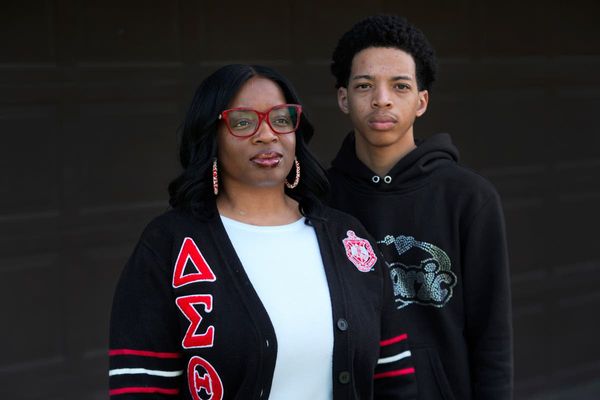
Robben Ford is one of the most significant electric guitar players active anywhere in the world today. For over 50 years he has maintained a successful solo career as a blues singer, guitarist and composer, with a stream of successful releases to his name.
Along with this, Robben had an illustrious career as sideman to the stars, with credits that include Miles Davis, Joni Mitchell, George Harrison, Little Feat, Michael McDonald and, believe it or not, Kiss. In recent years, he’s also had great success with collaborative projects alongside fellow guitar greats Larry Carlton, Mike Landau and John Scofield, and he’s also enjoyed considerable success as a producer.
Ford’s prowess as a soloist is legendary, with a style immersed in both blues and jazz and with a tone to die for. However, today we turn our attention to Robben’s equally impressive chords and comping, specifically his ability to seamlessly integrate jazz chord voicings into a blues context, which he first discovered when working with the blues harp legend Charlie Musselwhite, when he was still in his teens. Robben was working through Mickey Baker’s jazz chord book and found that these voicing all worked well in a Chicago blues context.
The examples that accompany this article are divided into eight sections. We kick things off with a contextualised chordal ‘lick’ that outlines the changes between the I7, IV7 and V7 in the key of Bb, full of colourful extensions and alterations.
Next up, we explore 7th chords on the top four strings using voice leading and exploiting an arrangement device known as ‘Drop-2’. Moving on, we look at voicings that move diatonically through the appropriate Mixolydian scale for each of our three chords, positioned across three, three-string groups.
The fourth example showcases some harmonically adventurous, and in some instances dissonant but colourful extensions, moved in semitones to outline our changes.
We’re looking at a specific and rather unique Robben-endorsed voicing in Ex5, before delving into tritone substitution and connected Altered chords in Ex6 and Ex7. As usual, we round this feature off with a contextualised cohesive part, although usually this would be a solo. Instead, here, we’re looking at two choruses of rhythm guitar, based around a 12-bar blues in the key of Bb.
The first time around we keep things bluesy, with some syncopated and connected motion between the voicings. For the second and final chorus, things take on more of a sophisticated jazzy feel, with alterations, extensions and more harmonic movement throughout.
Begin by learning these choruses exactly as written, before using the ideas embedded here to create your own variations, of course feeling free to assimilate any of the chord moves into your improvisational comping style. Most importantly, have fun…
Technique focus: Economy of motion and voice leading
As you work through the music within this feature, notice how close one chord is to the one that follows. This is a musical technique called ‘voice leading’. Essentially, our aim is to move the minimum distance between the component notes of each chord, so that the changes sound smooth and the fingerings are also practical.
While the bass notes might jump around in large intervals, as with Bb7 (I7) moving to Eb7 (IV7), other notes connected to these changes are more closely connected, such as the 3rd of Bb7 (D), moving to the b7th of Eb7 (Db), or the b7th of Bb7 (Ab), shifting to the 3rd of Eb7 (G). This semitone connection occurs throughout the examples that follow, so look out for them.
Also notice how many voicings avoid doubling the bass note. Consider the guitar in context with the rhythm section, where the bass outlines the root notes so we can concentrate on highlighting other notes in the harmony, such as the 3rds and 7ths, along with colourful extensions, such as the 9ths, 11th, 13ths, or altered tones like b9th, #9th, b5th and #5th. Given the limited polyphonic nature of the guitar, such editing is paramount.
Get the tone
Amp Settings: Gain 3, Bass 5, Middle 5, Treble 5, Reverb 5
Robben has played loads of different guitars over the years and his Dumble guitar amp is almost as famous as he is. That said, all you’ll need today is a balanced clean tone and select your guitar’s neck pickup.
Robben uses the rounded end of his guitar pick, rather than the point. Scott Henderson and Biréli Lagrène also use this approach, so why not give it a try?
Example 1. Robben-style chordal lick
Let’s begin with a Robben-inspired example that outlines a I7-IV7-V7-I7 move in Bb, using a variety of extended and altered voicings, mainly positioned on the highest four strings.
Make sure to take note of the connections on a string-by-string basis between each section, as the voice leading and melodic motion between each note in every chord is deliberate. Also notice how, as the chords move, they also create their own melody – a very musical aspect to keep in mind.
Example 2. Drop-2 I-IV-V-I connections (high voicings)
Let’s continue with an exercise that connects a set of drop-2 voicings, essentially chords voiced with the following intervallic permutation along with all their inversions: root-5th-7th-3rd, through our I7-IV7-V7-I7 sequence, again in Bb.
The idea is to move the minimum distance when changing from chord to chord,
so as to create a smoothly connected sound and also to make changing shapes easier.
Example 3. Three-string connections
In this example we’re taking small three-note voicings for our 7th chords of Bb7, Eb7, and F7, and moving each voicing along the strings horizontally trough the associated Mixolydian mode - Bb7 (Bb-C-D-Eb-F-G-Ab, Eb7): Eb (Eb-F-G-Ab-Bb-C-Db): F7 (F-G-A-Bb-C-D-Eb).
While in our example we move each voicing partially through each scale, you could continue further and create a set of seven voicings for each three-string grouping.
Example 4. Jazzy rootless voicings moving in semitones
Here we see how Robben might employ the same voicing moved in semitones against our I7-V7 and I7-V7 moves. Notice how the fingering remains identical, although the intervals change value on a string-by-string basis, so the 13th of Bb13 (= G) is moved down a fret to create the #9 of Eb 7#9 (= F#) and so on.
Example 5. Unique Robben V7alt-I7 voicing
This particular voicing is one of Robben’s favourites and he uses it to create an altered dominant V7 sound. The intervals are as follows: root-3rd-b7-#9-#5-b9
(F-A-Eb-G#-C#-Gb). He’ll frequently build the tension by adding one new note at a time on the highest strings, as you’ll see here.
Example 6. Tritone connections
Tritone substitution is a move common in both jazz and blues styles, and Robben uses this device masterfully. The basic idea is that two dominant 7ths a tritone apart share the same 3rd and 7th, albeit enharmonically respelled, they can be switched interchangeably by selecting a different bass note.
So, Bb7 (3rd-D, 7th-Ab) can become E7 (7th-D, 3rd-G#), Eb7 can become A7 and F7 can be switched with B7. It’s great for creating chromatic bass lines, as you’ll see here.
Example 7. Altered V7 moves
As we’ve established some clear 3rd and 7th connections, we can look at the upper voices in each chord. We create extensions and tensions by connecting stable intervals like 6ths and 9th with more dissonant tensions, like b5th, #5th, b9th and #9th.
Keep your ear on each voicing on a string-by-string basis, so you’ll see the #5th of Bb7 (F#) move chromatically down to the 9th of Eb7 (F) across bars 1-2, or move up from the #5th of Bb to the major 3rd of Eb7 (G) in bars 3-4.
Example 8. Complete 12-bar choruses
We round this intensive study off with a pair of cohesive chordal choruses around a 12-bar blues in Bb. The first time around we’re keeping things bluesy, with more motion within harmonically simple forms, whereas in the second chorus we’re adopting a more jazzy approach, exploring more chordal extensions, dissonant alterations with tension and release and more harmonic movement with the basic changes throughout.







